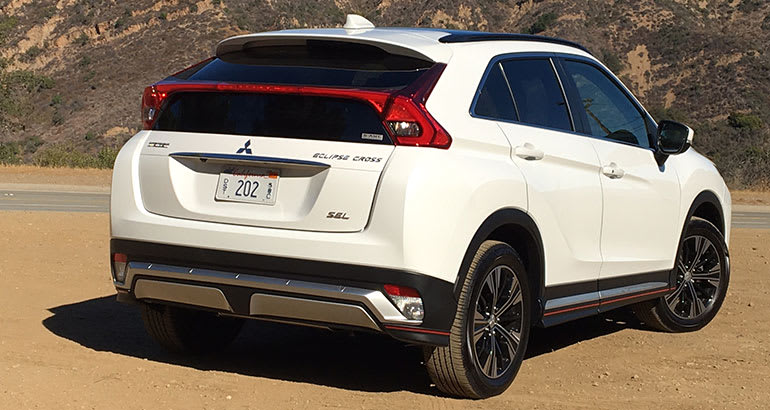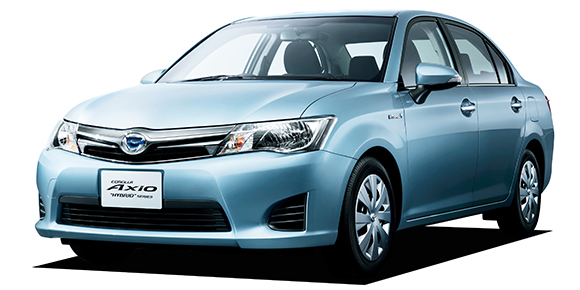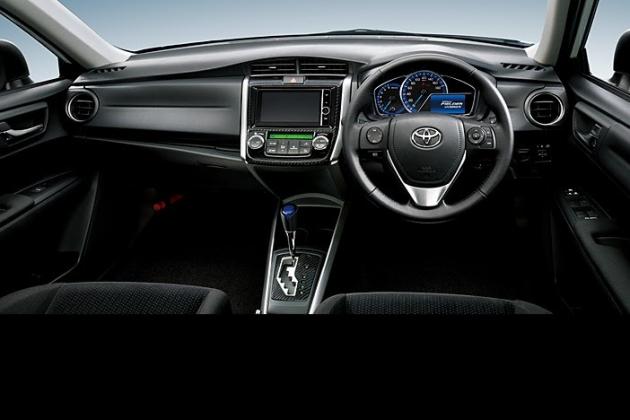

During the last 6-7 years, the demand(mostly imports) for the Compact Crossover SUVs have been significantly increased in SL car market. This spark was first ignited by the introduction of Honda Vezel making those crossovers popular among Sri Lankans. Most car buyers started to think that having a compact SUV is pretty beneficial when poor roads scraped the underneath of their Premios, Allions and Axios. Another factor is the low engine capacity of these crossover SUVs, which is a nice invitation to the buyers in a country where almost 95% of the petrol vehicles imported have an engine capacity below 1500cc. After sometime the turbocharging craze began with the introduction of Audi Q2, Honda Civic 10th gen and Toyota CHR. With the help of turbocharging, now the power of a 2000-2400cc engine can be extracted from a 1500cc engine. Since then SUVs like CRV started doing the trick. Now most people in SL have lost their faith on the Honda’s i-DCD hybrid system in Vezel, Fit and Grace. So the Mitsubishi Eclipse Cross was born…
Overview

We all know that as a vehicle manufacturer, Mitsubishi haven’t been much successful during the previous two decades. Even the Lancer was killed from manufacturing. But when it comes to the Eclipse Cross, seems that Mitsubishi is giving a fierce competition towards other similar SUVs in SL market such as the CRV and Vezel(a subcompact crossover SUV). One major thing that the Eclipse Cross stands above the others are the amount of options available throughout the range. On the CRV we have to step up to the top of the range model to get all the options. But with the Eclipse Cross G and G Plus (which are mostly imported to SL) have almost similar amount of options except for the infotainment system with the touch pad in the G Plus variant. What I drove is a 1.5 Turbo/CVT G variant with full time 4WD.
When we talk about the exterior design, without a doubt everyone loves the front end design. Its muscular and sharp, but without being overly flashy like the body kit loaded CHRs. When we walk towards the back, we totally forget what the front end looked like. Totally different compared to the front design and for me it looks kind of awful. It looks similar to something like a Honda Insight, but always reminds me of the Pontiac Aztek (what Walter White drives in Breaking Bad) which is regarded as one of the ugliest cars of all time. But here its better than the Pontiac Aztec, nevertheless most people wouldn’t be happy with the back end looks unlike the front end. But for me, the overall design of the CRV is a bit better and looks bigger than the Eclipse Cross. So let’s move to the interior.
Interior
Here in the photo, it's the G Plus version, which comes with the factory fitted infotainment system

Mitsubishis are famous for having cheap and plasticky looking interiors from the past. But here they have a much better interior design. It looks better and richer than what we have seen in the Outlander, which is a bit boring and less attractive with a plain design. The silver inserting with the combination of the piano black plastic panels certainly gives a rich and upmarket feel and for me, it’s the best interior I’ve ever seen from a Mitsu. But remember that those piano black panels are easy to get scratched and attract fingerprints. Dash design of the Eclipse Cross is much sportier than what you get in the CRV, even though CRV with those teak panels looks more premium(but dull) despite the awful placement of the gear shifter.
If you plan to bring down one, better to go with a fully loaded one which has done few kilometers in Japan, because adding options such as sunroof and leather seats additionally cost around 400,000 LKR.
The driving position is spot on with all the controls are in easy to reach positions. The position feels sporty with the steering wheel setup and the height really gives the confidence and “king of the road” feeling. This design gives you the feeling that everything is wrapped around you. All doors have soft padded armrests and plenty of spaces to store bottles and your stuff. There is a head up display which shows the speed and the digits look a bit small for me. Seats are comfortable with good side support, but they are on a little firm side. Plenty of headroom and legroom are there for all the passengers I never found it lacking space, specially in legroom department.
The standard 6 speaker audio system is great when you compare with the systems you get from Toyotas. Has thumping bass (which most owners in SL are looking for) but the vocals are a bit laid off and lacks the top sparkle in the trebles. Overall most people would be in love with the system. You can squeeze out the maximum by installing something like a Pioneer or a Kenwood aftermarket player if you have the G or a lower grade. I haven’t come across the in-built unit with the touch pad in the G Plus unit, but it might be better as Mitsus always had good audio systems (mostly in the bass department) in their vehicles from a long time. I still remember cranking up the volume as a kid in a 16 Sri Mirage till the bass hits the chest. There is a one with a Rockford Fosgate audio system but I haven’t come across that system in the JDM Mitsu site. Thus they give you the option to add premium speakers for front and rear, which might be better.
There are few disappointments in the interior. One is the Speedometer and the Tachometer. They have been directly taken out from something that was made in 2007-2008. Looks dated and boring as it doesn’t match with whole interior design. For me the boring to drive Toyotas have better looking meter panels even in the 2007 era. Anyway it’s only a little thing. Another problem that I had to face while driving is the Gear position of the Auto gear shift level. The indicators in the shifter panel seems misaligned with the lever and there was few times I have mistakenly put into the N instead of D after starting the car. Maybe this is because I’ve been used to the gate-type shifters. Other than that I personally don’t like the design on the seats. Looks a bit flashy, something like an Alto. So let’s move onto the part which makes this car really stands out among others..
Driving
Simple. Best of both worlds. Most compact crossover SUVs have firm suspension (Vezel owners know what I’m talking about), even though they are less enthusiastic on corners. But here it’s a totally different story. I travelled on some bad roads, climbs and on a stretch. Suspension soaks up most of the potholes and imperfections on bad road while keeping the car without swaying. Comfort wise, it’s on par with cars like Axios and better than Aquas, Fits and Graces. But when you push it to a corner it stays flat without much body roll. On cornering you feel that you have plenty of grip even though it sits high. Another thing is that the car feels rigid on corners. Trust me, you can do some really enjoyable driving from this babe! I mean it has the perfect balance between comfort and handling which is a really tricky job to achieve from an economical car like this, while being a crossover SUV. I drove the CRV and for me it feels a bit choppy on bad roads. Steering is a bit of a let down when you consider with the other characteristics, because of being light and numb. But still, it is sharp. Sometimes I felt that it is not nimble as the Vezel (maybe due to the size).
Then the engine. When I drove the CRV for a short distance, I noticed that the power is a bit hesitant on the lower end. But when you put your foot down the engine comes to life. I noticed the laziness in the throttle similar to what you get in a Grace or a Vezel when travelling at low speeds. I also mentioned earlier in this forum about how all the Honda i-DCD hybrid systems feel a bit hesitant to start climbing hills, and surprisingly, even being a non hybrid and a CVT, the CRV also waited a second or two to start climbing the same hill.
In the Eclipse Cross, power delivery is flawless and feels punchy throughout SL street legal speed limits. I did floor the throttle for a brief time period and ended up speeding up to 120kmph without breaking a sweat. Power is always on demand and surprisingly I did not experience any issue in the acceleration department like the CRV. So thumbs up for the engine performance. But the car that I drive had the full time all-wheel drive system so there might be some improvement in grip and acceleration levels over the 2WD version.
Brakes are okay, without any significant feature to highlight.
The vehicle is surprisingly quiet on roads with minimal road noise levels, so you hardly feel the actual speed. When we travel around 60kmph gives the feeling of driving at 40kmph, because of this isolation. There is a slight issue and that’s the engine noise. From the outside, the engine is significantly louder than most of the 1500cc cars like Premios and Axios. The radiator fan kicks in frequently worsening the situation. The engine can also be heard as a slight whirling when traveling with a light foot, which seems as a slight noise because only a little amount of road noise is entered into the cabin. So the engine noise is highlighted. So let’s move onto economy.
Economy
The fuel figures are a bit like a mixed bag. When the car was brought home from Hambantota, on 92 octane, showed a figure of 12.3 kmpl which is a bit on the lower side. After few days, averaged shrunk to 6-7 kmpl territory on 92. It had 2500km on the clock when it reached home and after the 92 ran out, 95 was pumped. Still the car has rarely left the town, but gives a figure around 8.5 kmpl, which is good for a AWD vehicle.
Final Words
IMO, I think Mitsu have really done something this time after being out of the track for couple of years. For me, this is the best to drive among CRV and Vezel, with a nice balance between comfort and handling. I have not yet driven the Peugeot 3008, which is considered to have a better interior and better driving experience, but most people in SL would look for a Jap made vehicle. The CRV has a much more bigger and muscular looking exterior plus 7 seats, but the Eclipse Cross is better to drive and more comfier. CRV has a kind of premium looking interior with teak panels, while the Mitsu has a modern looking sporty interior. For owners who are looking for a premium feel, I think they are better off with a CRV while the ones who are looking for a sporty yet comfortable ride might be satisfied with the Eclipse Cross. Also the options like the touch pad navigation system, Head-up displays, panoramic sun roof plus the sporty front end design would like to grab attention of most buyers.
Still none of us could comment on reliability department as the vehicle is very new to SL.
But I will always recommend this over something like a Premio, Vezel or a CHR for bringing down for the permit, because you get car-like comfort and “go anywhere” ability with the Eclipse Cross. Only downside is the fuel economy, but I think it’s a bit early to comment on the exact figures. Therefore it’s always safer to avoid the 4WD versions. But I personally believe that a person who can afford to bring down such vehicle can handle a bit more cost for the fuel.
Thank you for reading!
- Read more...
-
- 8 comments
- 9,552 views












